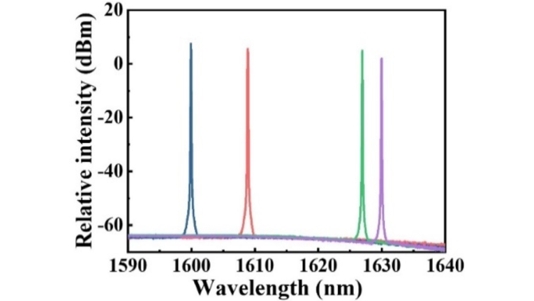The laser operations at U-band (1625-1675nm) have found numerical applications in telecommunication, Doppler wind LIDAR and gas sensing. Among the laser sources, Er
3+ activated fiber lasers show many advantages in compactness, good beam quality and low cost. However, the Er-doped fiber lasers at wavelengths longer than 1600 nm face challenges of excited-state absorption and low gain coefficient.
Most recently, a research team led by Shanghai Institute of Optics and Fine Mechanics (SIOM) of the Chinese Academy of Sciences (CAS), has succeeded in broadening the emission band of Er3+ ions by manipulating the local structures around Er3+ ions in phosphate fiber. The study was published in Optics Letters on Jan. 15, 2023.
In their experiment, more than 260nm band width (1420-1680 nm) has been achieved in self-developed Er doped phosphate fiber. The laser wavelength of Er-phosphate fiber was extended to 1630nm. The maximum output powers and slope efficiencies of the lasers at 1627nm and 1630nm reached up to 44 mW/12.5% and 16.5 mW/5.6%, respectively, in a 30-cm phosphate fiber. These are the highest output powers and slope efficiencies at 1627nm and 1630nm from an Er3+-doped all-fiber laser configuration.
For the phosphate fiber, the core and cladding had diameter of 6μm and 125μm, respectively. The numerical aperture is 0.17, the concentration of Er2O3 in the fiber core is 3.5 wt%, and the background loss is 0.5 dB/m@1300nm, using a length of 30cm.
Moreover, compared with Er-silica fiber, the studied Er-phosphate fiber has much higher concentration of Er, shorter length of fiber and high spectroscopic flatness of gain, indicating an excellent fiber host for U-band fiber lasers.
This research leads to a host material for fiber lasers operated at U-band wavelengths.
Optical spectra of a 15-cm Er-phosphate fiber laser at 1600, 1609, 1627 and 1630 nm(Image by SIOM)
Article website:
https://doi.org/10.1364/OL.480921

